LED lighting has come along way. About 6 years ago, HOME ARCHITECTS ® wrote an online article about LED lighting, but back then, it was expensive. Today, the price has reduced considerably and the intensity has increased. LED = Light Emitting Diode.
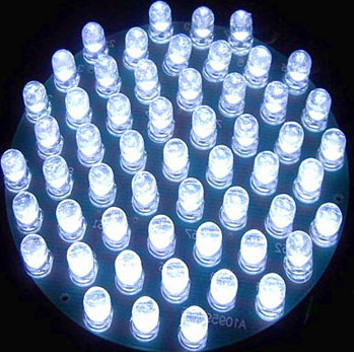
Recently, Rand Soellner, Architect, ArCH, NCARB, LHI, M.A. Arch, took a CEU (Continuing Education Unit) course for his ongoing educational requirements, as part of being a licensed Architect in multiple states. This course was called: “ABCs of LED Lighting: How Solid State Lighting is Shaping the Future of Sustainable Design.” It was taught by another Architect: Mr. Joseph A. Rey-Barreau, AIA, IES, Architect/Lighting Designer, Associate Professor, College of Design, University of Kentucky.
Update for LED Lighting
Mr. Rey-Barreau is one of the foremost designers of building lighting in the USA and world. He has reached the conclusion that LED lighting will become the main lighting in the USA and world over the next several years. This is due to improvements in LED light output and reductions in pricing and overall advantages inherent in LED lights.
Their are benefits to the Light Emitting Diode form of lighting: There is no burning element to replace. There is a separate heat sink to dissipate heat energy. It lasts a very long time before needing to be replaced. Costs are reducing daily.
In 2010, about 6% of the Residential Lighting Market was LED, 25% incandescent, 29% CFL (Compact Florescent) and a mix of other miscellaneous types. By 2016, it is projected that the residential lighting market will become: 49% LED, 5% incandescent, and 19% CFL. By 2020, it is projects that incandescent lighting will no longer be in the marketplace, or its presence less than 1%, CFLs: 11% and LED lighting 71%. The reasons will become obvious.
This firm (HOME ARCHITECTS ® used to advocate CFLs, due to their lowered pricing, effective lighting and reduced energy consumption relative to old-fashioned incandescent lighting. However, LEDs are now becoming the latest low-energy consumption champions and the lighting quality is on a par with incandescent and other quality-appearance lighting, plus the cost is decreasing daily, making LED lighting a better value.
Between 2010 and 2012, LED lighting reduced by more than half. It is projected that between 2012 and 2015, prices will again drop by more half, and that between 2015 and 2020, LED prices with again drop by more than half. According to Architect Rey-Barreau, this means that an LED fixture costing $200 in 2010 will likely cost around $20 in 2020.
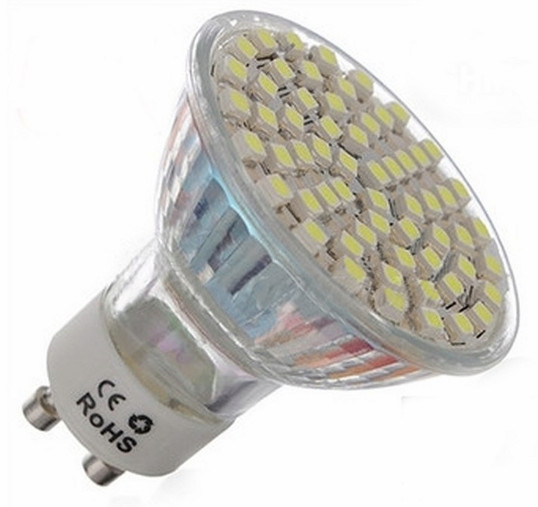
In addition, the EFFICIENCY of LED lights continues to increase, with the potential to reduce lighting energy use in the USA by 1/4 of its present consumption by 2030. This, of course, reduces the need to generate the electricity for the power consumed by less efficient lighting methods, thereby reduced the greenhouse gas emissions of energy companies, thereby hopefully reducing global warming. Everything is linked together on our planet.
What about color quality and emissions? LEDs do not emit ultraviolet rays or infrared. As a matter of fact, LED lighting was deemed of such high quality and with such little effect on the environment, that the Louvre art gallery in Paris, France, changed its Mona Lisa lighting to LEDs. That’s a tremendous endorsement of light quality. Also, the light color can be tuned to be just about whatever the lighting designer wants it to be.
“Kelvin” temperature is how lighting color is defined. LEDs can be obtained in the 2700K, 3000K, 3500K and 4000K “temperature” range, which is related to the color of incandescent lighting, which people prefer.
Dimmers for LEDs have to be specially matched to the LED and other hardware associated with it. You cannot use a normal incandescent dimmer for an LED. What is interesting, is that LED dimmers can color tune the lighting as it dims into the 2700K to 1800K color range, making it even more similar to the pleasant visual aspects of incandescent lighting.
Efficiency of LEDs versus other conventional lighting:
60 watt incandescent bulb= 820 Lumens (the amount of light) = 13.6 lumens per watt.
15 watt CFL = 950 Lumens = 63.3 lumens per watt.
8 watt LED = 810 Lumens = 101.2 lumens per watt.
In other words, you get much more light for your dollar from LEDs than you do with other conventional sources. This means that your monthly power bills should be lower, if everything else remains the same.
LED lighting is 742% more efficient than incandescent lighting. LED lighting is 159% more efficient than CFL lighting. Why would you want to squander your money on less efficient lighting? That makes no sense.
By 2020, it is projected that LED lighting’s efficacy will rise to 303 lumens per watt. Improvements continue to be made in LED lighting daily.
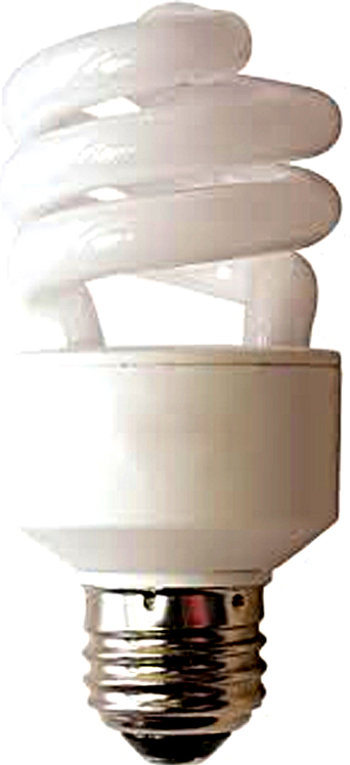
LED Lighting Service Life Length
LEDs are unlike any other type of lighting we have ever known. Because there is no thin metallic fiber burning, that can’t wear out. 50,000 hours is what is projected as a normal useful service life for an LED lamp (lamp = “bulb”). In other words, if you kept an LED light on 24 hours a day, every day, it should last at least 5 years. However: the typical LED is not really supposed to fail at that point. It is supposed to have reached what is called its “Lamp Lumen Depreciation” point of 70% (or “L70”) at that time. Which means: after 5 years of continuous “on” time, the typical LED will be providing about 70% of the amount of light it did when it was first activated. Which means, it could continue to provide lighting into the future. However, the 70% point is the industry standard point in the lifetime of a lamp at which humans start to notice the decreased amount of lighting. In a residence, it is believed that main use area lighting may only be on for 8 hours a day or even less. However, at 8 hours a day, that means that LEDs may last 15 years before reaching this L70 point. For all intents and purposes this may = virtually no lighting maintenance to many people. This author used to change incandescent bulbs about every 3 months. Today’s custom house design Clients are demanding less maintenance. LED lighting = greatly reduced maintenance, at least in the lighting category of residential upkeep.
The Physics of LED Lighting
LED lighting is also called SSL or Solid State Lighting. These terms are interchangeable.
A group of LEDs is called an LED array.
A diode is a simple semiconductor. A semiconductor is a solid material with the variable ability to conduct electric current. Electricity is conducted through a semiconductor die, which generates the light. There is a Positive-Negative junction on each LED die. When electrons from the Negative meets a hole on the Positive, a photon is emitted. When voltage is applied across the electrodes, the current flows from the anode (Positive side) to the cathode (Negative side). When an electron enters a small hole at the Positive-Negative junction, it falls into a lower energy level. The excess energy left behind is released as a photon of light.
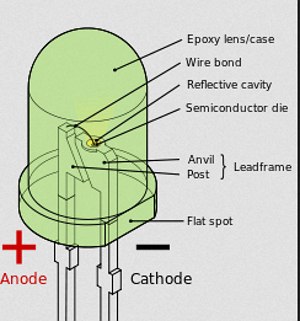
LEDs release heat in conduction. To deal with this heat, LEDs are mounted on a heat conductive material called a Heat Sink. So, most LED lighting fixtures will have an associate heat sink radiation element as part of the device.
High-powered LEDs are what is used to space illumination.
How to Use LEDs in Normal Edison Mounts
Normal residential lighting uses what are historically referred to as Edison screw-type mounts. It was developed by Thomas Edison’s company and was licensed in 1909 under the Mazda trademark. It has been used for more than a century for primarily incandescent light bulbs. However, CFL and other lighting type manufacturers have understood that virtually all housing is illuminated with Edison screw type bases, so that for any new lighting to be successfully introduced into the marketplace, it will have to be able to work in the same type of mount. Therefore, the new LED fixtures typically will come with an Edison screw shell socket adapter. The thread part connects to the Neutral and the contact base tip connects to the Hot electrical source coming from the power panel of the residence. The ANSI and IEC standards refer to the E26 as the “medium” or standard Edison screw type base in America (E27 in Europe). the “26” or “27” is the diameter in millimeters, measured across the peaks of the threads. There is a smaller size, the E17 and E12, used for smaller devices, like candelabra bulbs (“lamps”).
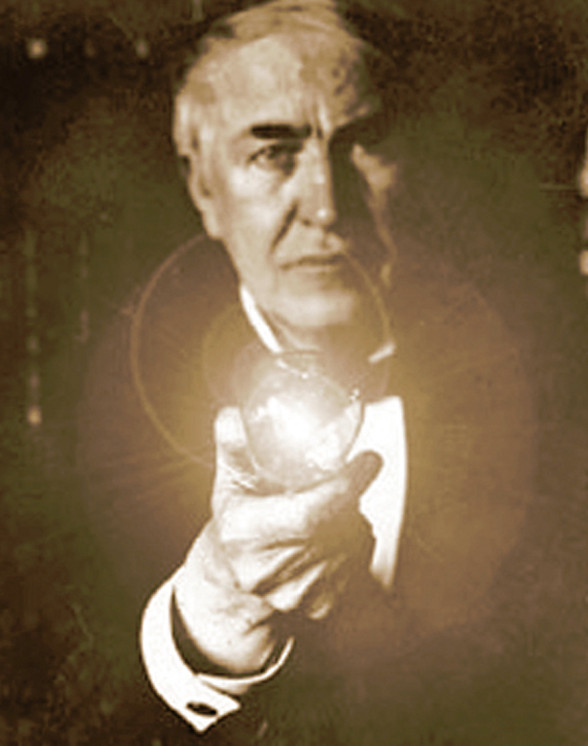
In other words, you should be able to go to any Lowes or Home Depot or Walmart, buy new LEDs and then use them in your standard Edison type screw bases in your house, assuming that you house was properly wired by a licensed Electrician.
History of LEDs
Although a British scientist in 1907, and a Russian scientist between 1924-1941 noticed and developed some primitive LED experimental devices, it wasn’t until 1962 that American scientist, Nick Holonyak developed the first practical visible spectrum LED while working at the General Electric Company. In 1963, he predicted that the LED would one day replace the incandescent light bulb. That day has come. He was right.
Physical Difference of LEDs as Compared to Other Lights
LEDs have no glass enclosure and no gases inside them or filaments or electrodes. Therefore, they are less prone to failure. They are not as delicate.
HEAT GENERATED
Incandescent lamps release 90% of the energy as heat.
CFLs release 80% of their energy as heat.
LEDs release 10% of their energy as heat.
In other words, LEDs are a much more efficient provider of light, with 80% less heat generated than incandescent lamps. This means: that the waste heat created by incandescent lamps that makes your Air-Conditioning work harder and longer to make your house more comfortable during hot weather will NOT have to work as hard or as long to deal with the minimal amount of heat created by your new LED lights. That’s an energy win-win.
RATED LIFETIME VERSUS USEFUL LIFE
Incandescent = 750 to 2,000 hours lifetime until lamp burnout.
CFL = 8,000 to 10,000 hours lifeltime until lamp burnout (although this author’s experience has been significantly lower than this).
LED = 35,000 to 50,000 hours of “Useful” life (not actual lifetime, which could be much longer).
DIRECTIONAL LIGHT EMISSION
LEDs radiate light directionally. So you can direct it where you need it the most.
SIZE
LEDs can be very small and of low profile if desired, making them useful in applications where other lighting types would be clumsy, such as for stairway lighting, ceiling coves, decorative general lighting in tight spaces, inside cabinetry and other applications.
ON TIME
LEDs come on, fully bright, immediately. Other sources, like CFLs and metal halides require several minutes to reach their fully intended brightness.
UV and IR EMISSIONS
LEDs have no UltraViolet or InfraRed emissions.
CFLs and metal halide lamps have UV emissions.
Incandescent lamps have InfraRed emissions.
MERCURY CONTENT
Even though CFLs have a minor amount of mercury content, they still do have some mercury content, which has been proven to be a deadly poison to organic life forms such as human beings.
LEDs have zero mercury content.
LED Products Ready for Market in the Residential Sector
In other words, what kind of LED application lights can you buy right now when you go to Lowes, Home Depot and other lighting sales locations? According to Rey-Barreau:
1. Recessed down lights.
2. Outdoor wall-mounted Porch lights.
3. Outdoor & Indoor step lights.
4. LED undercabinet lighting.
5. LED in-cabinet lighting.
6. LED Pendant lights (hanging).
7. LED Track lighting.
8. Landscape lighting.
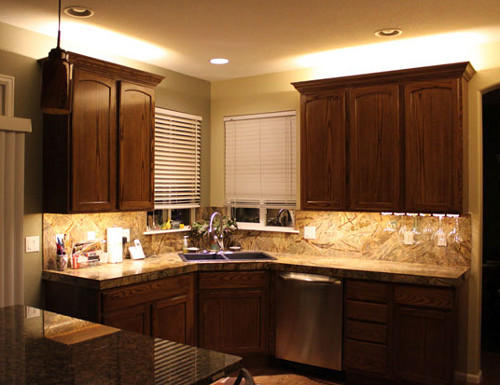
This firm also has to believe that surface mounted interior fixtures for both horizontal and vertical (sconce) lighting surely must also be available. And let’s face it: you can always insert the new LED lamps (bulbs) into any normal Edison mount.
Dimming
As mentioned before, you can’t use an incandescent dimmer on an LED. You have to obtain a specific dimmer engineered for use with the LED lamps it is intended to control.
Summary
In summary, LED lighting has the ability to reduce the power bills of every residential owner in America (and the world), along with reducing lighting energy usage in the USA to 1/4 of its present consumption by 2030. LED lamps and fixtures are continuing to decrease in cost daily. In only 2 short years, LED lighting will make up about half of the Residential lighting market sector.
